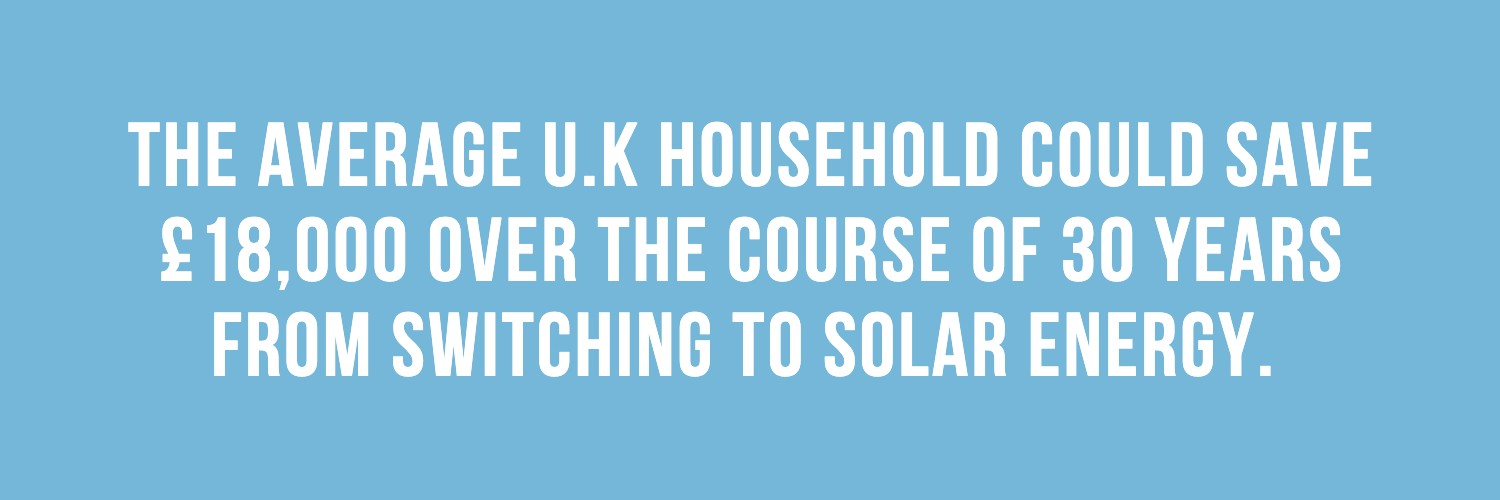Renewable energy has slowly creeped into all of our lives over the past 20 years, with electricity generation from wind power increasing by 715% from 2009 to 2020 in the UK (Office of National Statistics).
But despite the benefits being widely known, Google trends data shows that interest in people searching for ‘solar energy’ has actually reduced over the last 15 years.
Amazingly, the sun is able to generate more energy than the entire population would consume in 27 years, within just 24 hours alone (GreenMatch). That statistic alone makes you wonder how much money each household could save from switching to solar energy, while also making a positive difference to the planet, and why more people aren’t making the switch.
At Freebies, we’re all about cost savings, so below you’ll find some of the average cost savings UK households make each year from solar energy.

Cost savings from solar energy
The main issue people have when it comes to installing solar panels is the initial cost of installation, which can also include re-tiling the roof (mostly for aesthetic purposes).
According to My Job Quote, the average cost of switching to solar energy can range from £2,500 to £9,000 depending on the size of the house and the complexity of the job. This price range includes everything from the actual panels to installation, which typically takes between 2-5 days.
Once you’ve switched to solar energy however it’s estimated that it reduces energy bills by 50% each month. Say the average small to medium UK household spends around £100 per month on their energy bills, this would mean it would take them around 5 years to make the money back that they spent.
If you were then to stay in the same house for the next 30 years, you’d roughly make a saving of £18,000 on your energy bills. So while the initial cost of investing may be off putting, if you’re looking at is a long term investment, the cost saving is substantial.
In addition to the cost savings, there is also the opportunity to sell excess electricity you produce back to the grid, through the Smart Export Guarantee (SEM). Considering how much energy the sun generates, this alone could be a lucrative venture.

Benefits in addition to cost savings
While the cost savings are enormous, it’s important to remember the primary purpose of renewable energy. We all need to be doing more to reduce our carbon footprint and reducing the amount of fossil fuels burned by switching to solar is a huge step towards this.
Issues with Solar energy
While the benefits of solar energy far outweighs the negatives, however one issue that people seem to have when it comes to installing them on their homes is the general look of them.
Companies all over the world are working on making alternative solar panels that do look more aesthetically pleasing on roofs, but if you’re using the standard solar panels we’re used to seeing in the U.K, they typically blend in with black tiles making them almost unnoticeable.
Other potential issues are that we don’t always get that much sun in the U.K, especially in the winter months, so at times you may still have to rely on another energy source. This is also a problem if your panels build up a lot of dirt, which won’t allow them to generate as much energy. A heavy downpour usually fixes this issue though.
Other types of renewable energy
Aside from solar energy, most other types of renewable energy are limited to big businesses and government when it comes to the set-up, these include:
- Wind Energy: We’ve all seen wind farms and turbines out at sea. Wind turbines aren’t typically what you’d install yourself to power your home, but instead are becoming increasingly popular as a sustainable power source throughout the UK.
- Hydro Energy: This uses energy produced from water, such as dams and can often be more reliable than solar or wind. While this isn’t something you can set up in your backyard, it can be used for domestic energy generation through known energy suppliers. Tidal energy is also another form of hydro energy.
- Geothermal Energy: This uses heat below the earth’s surface to generate energy.
- Biomass Energy: This involves the conversion of solid fuel made from plant materials into electricity.
Has this post inspired you to look in to solar to improve the planet and save money? Then check out our daily freebies, offers and discounts here.


